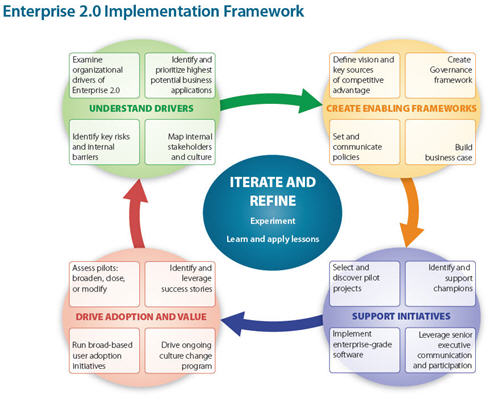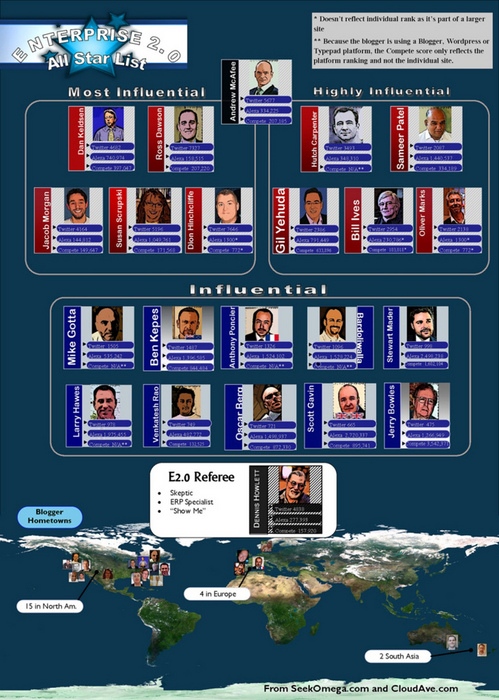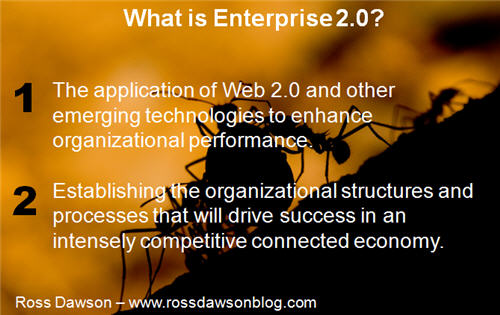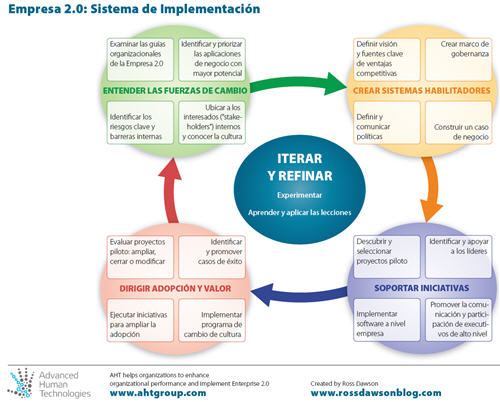8 Guiding Principles for Pilot Programs: A Key for Enterprise 2.0
In my Implementing Enterprise 2.0 report I put Iterate and Refine at the center of the Enterprise 2.0 Implementation Framework.
One of the most critical elements of this principle is the ability to establish and run effective pilot programs.
Below is an excerpt from Chapter 17 of Implementing Enterprise 2.0 on Pilots, which describes 8 guiding principles for pilot programs.
GUIDING PRINCIPLES FOR PILOTS
While there are no hard and fast rules for establishing successful pilots, eight guiding principles that should be kept in mind are:
“It is reasonably cheap and easy to get a pilot up and running to evaluate how successful a new Technology will be. Fail fast, fail cheap. Set things up as pilots and pick up the lessons.”
CIO, large property developer
1. Select fertile ground.
Pilots often establish the tone for how broader initiatives are received across the organization. Stories – both positive and negative – about the success of pilots often filter out very widely. A successful pilot can easily take a life of its own as others hear about the benefits and actively want to apply them in their own work. Failures can often be referred to across the organization as reasons why related initiatives will not succeed. While you can never expect all pilots to be successful, maximize chances of success by selecting the most promising projects and the best team, and make it easy for them to identify value.




